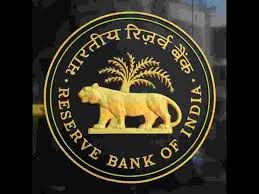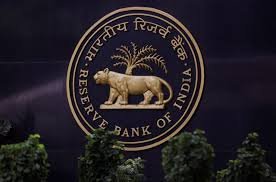RBI’s Guidelines on Government Debt Relief Scheme
Introduction to RBI’s Guidelines on Government Debt Relief Scheme
The Reserve Bank of India (RBI) has recently issued guidelines for the implementation of the Government Debt Relief Scheme (GDRS). The scheme is designed to alleviate the burden of debt on individuals, businesses, and various sectors affected by the economic downturn. With an increasing number of borrowers struggling to meet their obligations, the RBI’s intervention aims to restore financial stability while ensuring equitable treatment for all stakeholders.
The Objective and Scope of the Scheme
The GDRS is introduced to provide targeted debt relief to borrowers who have faced disruptions due to factors like the COVID-19 pandemic, natural calamities, or other unforeseen events. This debt relief can involve measures such as rescheduling loans, offering moratoriums, or restructuring payment schedules. The RBI’s guidelines emphasize transparency and fairness in executing these measures to ensure that borrowers can regain their financial footing.
Key Features of the RBI Guidelines
The RBI’s guidelines are detailed, laying out specific steps for both financial institutions and borrowers. Some key aspects include:
- Eligibility Criteria: Borrowers must fulfill certain criteria, such as the impact of the crisis on their financial health and the inability to repay loans on time.
- Repayment Flexibility: The RBI has mandated that financial institutions must provide flexibility to borrowers, allowing for easier repayment terms.
- Debt Restructuring Options: The guidelines provide for restructuring of loans in a way that borrowers can manage without overwhelming their finances.
- Government Support: The Indian government will support this initiative by offering financial assistance to ensure that the scheme benefits both borrowers and financial institutions.
Challenges and Opportunities in Implementing the Scheme
While the GDRS aims to assist borrowers, its successful implementation presents challenges. Financial institutions will need to balance their responsibilities to creditors while helping borrowers in need. For the scheme to be effective, both parties must engage in good faith negotiations. On the other hand, this could provide an opportunity for financial institutions to strengthen their relationship with borrowers and contribute to the broader economic recovery.

Why This News is Important
Debt Relief to Aid Financial Recovery
The implementation of RBI’s Government Debt Relief Scheme is of utmost importance in light of the financial distress faced by individuals and businesses. During economic crises such as the pandemic, borrowers often find themselves in situations where repaying loans becomes an insurmountable challenge. By offering debt relief, the RBI provides a much-needed cushion for those suffering from financial hardships, ensuring they are not further burdened by their obligations.
Impact on the Economy and Stakeholders
The scheme is a step toward reviving the broader economy. Debt relief helps restore purchasing power, promotes consumption, and provides businesses with the liquidity to continue operations. It is also vital for preserving the financial health of institutions that might otherwise face higher defaults.
Potential to Improve Loan Accessibility
Another key reason this news is important is that it opens up the possibility of better loan accessibility in the future. By making it easier for borrowers to recover from debt, the RBI’s guidelines may encourage lenders to extend more credit with confidence, knowing there are provisions for financial restructuring during times of crisis.
Historical Context
Background of Debt Relief Schemes in India
The Government Debt Relief Scheme has its roots in earlier initiatives undertaken by the Indian government and financial institutions in times of national crises. Similar debt relief measures were put into place during the 2008 financial crisis, where moratoriums and restructuring policies were adopted to aid both individuals and businesses. The most significant debt restructuring efforts occurred during the COVID-19 pandemic when the RBI implemented the moratorium on loan repayments to help borrowers survive the economic fallout.
Role of the RBI in Financial Stability
The RBI has consistently played a crucial role in stabilizing the Indian financial system. By stepping in with policies such as the GDRS, it helps mitigate the negative effects of crises on the economy and maintains the balance between creditors and borrowers. The RBI’s guidelines are an extension of its ongoing effort to ensure economic stability and equitable growth in the country.
Key Takeaways from RBI’s Guidelines on Government Debt Relief Scheme
| Serial No. | Key Takeaway |
|---|---|
| 1. | Targeted Debt Relief: The scheme aims to assist borrowers affected by crises, offering targeted relief measures. |
| 2. | Eligibility Criteria: Borrowers must meet specific conditions to qualify for the scheme, ensuring that it targets those in genuine need. |
| 3. | Flexibility in Repayment: The guidelines mandate flexible repayment terms to help borrowers manage their debts more effectively. |
| 4. | Debt Restructuring: The RBI allows loan restructuring as a part of the relief measures, helping borrowers find sustainable ways to repay. |
| 5. | Government Support: The scheme is supported by the Indian government, providing a financial cushion to both borrowers and financial institutions. |
Important FAQs for Students from this News
Q1: What is the Government Debt Relief Scheme (GDRS)?
A1: The Government Debt Relief Scheme (GDRS) is an initiative introduced by the Reserve Bank of India (RBI) to provide debt relief to borrowers affected by economic crises, such as the COVID-19 pandemic or natural disasters. It allows for measures such as loan rescheduling, moratoriums, and restructuring to help borrowers manage their debt obligations.
Q2: Who is eligible for the Government Debt Relief Scheme?
A2: Borrowers who have been financially impacted by crises like the pandemic or natural calamities are eligible. The RBI guidelines specify that the borrower must demonstrate an inability to meet their loan repayment schedule due to these disruptions.
Q3: What are the key features of the RBI’s debt relief guidelines?
A3: The RBI guidelines outline eligibility criteria, repayment flexibility, debt restructuring options, and government support to facilitate smooth implementation. These measures aim to offer financial stability to borrowers while ensuring equitable treatment for all parties involved.
Q4: How does the Government Debt Relief Scheme benefit financial institutions?
A4: Financial institutions benefit by maintaining relationships with borrowers through structured repayment plans. The scheme helps reduce defaults, enabling the institutions to recover loans over time, while the government provides financial assistance to mitigate the risk.
Q5: What is the role of the Indian government in the debt relief scheme?
A5: The Indian government supports the RBI’s debt relief scheme by providing financial assistance to borrowers and lenders. This ensures the scheme’s effective implementation and helps stabilize the broader financial system.
Some Important Current Affairs Links


















